#anaerobic composting
Explore tagged Tumblr posts
Text

Anaerobic compost bag unit at the Farm!
5 notes
·
View notes
Text
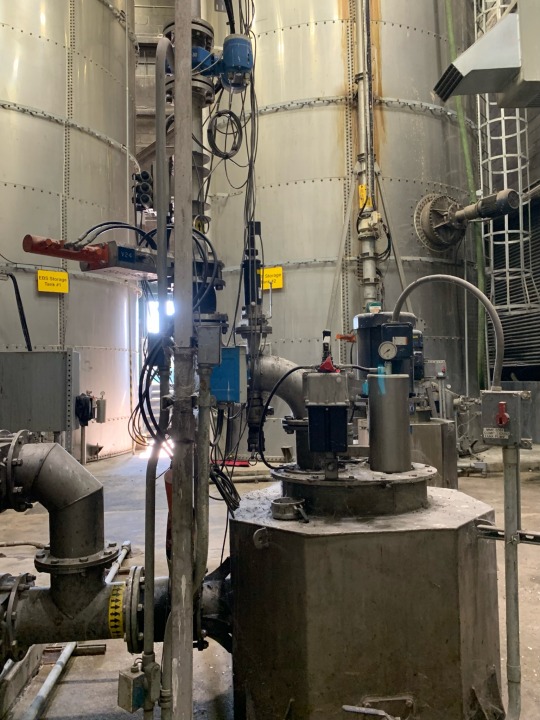
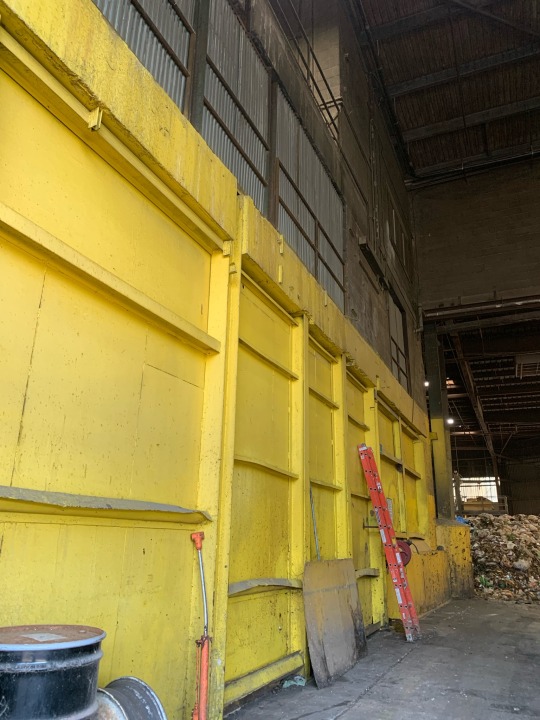
last day i work here before they change the route 😔
#in actuality its better because well be bringing all the stuff to get composted instead of going to anaerobic digestion#but sad cause i liked going here#mine
26 notes
·
View notes
Text
So, progress of today (all while working on steps of bread baking in between working): Saw instagram video about airlayering trees to get mature cuttings Went on rabbit hole of researching airlayering Airlayering mentions putting a topping of compost over newly planted cuttings Start researching compost bins Join several local gardening groups on Facebook Continue researching compost bins Find an organic compost and soil amendment company nearby Research their products They mention bokashi as a composting additive Research bokashi Start comparing bokashi composting to worm composting Order a metric ton of seed catalogs Sign up for soil building class next month Start pondering whether I have room/time/energy to do bokashi, worm, AND traditional composting all at the same time Shake fist at Freyr because I know this hyperfixation is all his fault
#homesteading madness#garden planning#compost ideas#bokashi worm and traditional composting all have their benefits#bokashi for example is anaerobic which means it can compost bones and meat and dairy in addition to vegetation#freyr you smug fuck#I can feel you laughing#get back here so I can smack you
5 notes
·
View notes
Text
getting too mad about biodegradable plastics sighing filling the spray bottle with cold water
#op#we already have compostable plastic it just needs to be processed at high temperatures in an industrial setting#biodegradables also have a lot of requirements. some are anaerobic some arent. some need high temps#saw an article that suggested expecting the public to recycle was unrealistic (true) but also argued for biodegradables/compostables#girl how do you intend to collect the new plastic#and even if it could break down in the environment. is there really any kind of waste we can dump into the ocean that wont cause issues.#bonus: this has a pretty limited use case. and wax paper is better for food storage.
0 notes
Text
How does one create a compost pile for their garden?
Composting is an essential practice for any gardener looking to improve soil health and reduce waste. By creating a compost pile, you can turn kitchen scraps, yard waste, and other organic materials into a nutrient-rich soil amendment that will nourish your plants and help them grow. In this article, we will guide you through the steps of creating a compost pile for your garden. Continue reading…
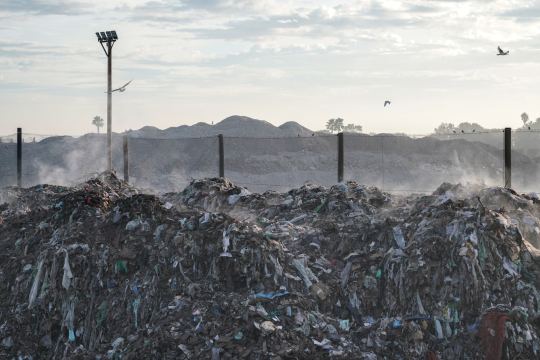
View On WordPress
#aerobic#anaerobic#brown materials#carbon#compost#composting#decomposition#fertilizer#gardening#green materials#heat#microorganisms#moisture#nitrogen#nutrients#organic material#oxygen#soil#sustainability#waste reduction
1 note
·
View note
Text
Hot Composting: The Ultimate Guide to Achieving Fast and Effective Results
Hot composting is a method of composting that speeds up the decomposition process of organic waste material. This process requires the right balance of carbon and nitrogen, moisture, and oxygen to create an environment that encourages the growth of microorganisms that break down organic matter. The result is nutrient-rich compost that can be used to improve soil quality and promote healthy plant…

View On WordPress
#aerobic composting and anaerobic composting#aerobic composting bin#compost activators#compost probe thermometer#compost soil thermometer#compost thermometer#composting heat generation#good quality garden compost#high quality compost#hot compost bin#hot composting#hot composting at home#hot composting vs cold composting
0 notes
Photo

Microplastic Contamination in Compost - which has the Least?
Hey, Tumblr fam!
Have you ever wondered what happens to all the garden green waste and organic fraction of “black-bag” mixed waste that you toss out? Well, it turns out that these can be transformed into urban compost that improves soil fertility in agro-ecosystems.
But here's the catch - microplastic contamination in compost is a big problem. Microplastics, which are not removed during the composting process, can cause significant harm to the environment, especially when they end up in the oceans.
However, all is not lost! Compost can still be a sustainable fertilizer if we can solve the plastic problem. But to do that, we need to know which source of compost is better and which is worse for containing microplastic - compost made from composted green waste or digestate from anaerobic digestion?
Well, look no further because our article has got you covered! In it, we compare both sources of compost and provide the answer. So, if you want to make informed decisions about which compost to use in your garden, give our article a read!
Check this out. Adn, let's work together to create a sustainable future for our planet!
#sustainability#environment#compost#microplastics#soil health#anaerobic digestion#ocean pollution#ecofriendly
0 notes
Quote
The valuable organic materials in food by-products and human waste today can be safely returned to agricultural land as compost and digestate from anaerobic digestion. These inputs help rebuild soil organic matter, improve soil health, increase water infiltration and retention, prevent erosion, and allow the soil to sequester more carbon. Innovators transforming organic matter into agricultural inputs include Lystek, who use human waste to produce fertilisers and the Nutrient Upcycling Alliance, who use urban organic waste streams to produce fertilisers. Other innovators use organic matter to make animal feed, such as Agriprotein, who use black soldier fly to transform food waste into fish feed for aquaculture.
‘Eliminating food waste’, Ellen MacArthur Foundation
#Ellen MacArthur Foundation#food waste#organic materials#food by-products#human waste#compost#anaerobic digestion#Lystek#Nutrient Upcycling Alliance#Agriprotein
1 note
·
View note
Text
This is approximate since calculations vary, but somewhere in the neighborhood of 20% of carbon emissions since the Industrial Revolution have come from destruction of terrestrial ecosystems—wetland destruction, deforestation, degradation of grasslands and so on
Soil, soil communities, root systems, carbonate rock, wood, living plants, and peat in wetlands—all holds carbon
Now consider what plants do for you
The mere sight of plants and trees improves mental and physical health. I won't elaborate much more upon this, the positive effects are incredible and overwhelming.
Trees and vines that shade your home and outdoor areas: reduce the cost of cooling, meaning less electricity is used. Shade reduces the risk of death in extreme heat events.
(Trees also reduce light and noise pollution)
Edible plants (many wild plants and many plants you can grow): provide you with food reducing your dependence on industrial agriculture and cars to reach supermarkets
Community gardens and orchards: creates resilience and interdependence among small local communities, reducing the power of capitalism and increasing the ability of individuals to organize and create change. Makes more sustainable and plant based diets accessible to people for whom they would ordinarily be inaccessible
Compost piles for gardening: less greenhouse gas emissions than result from waste breaking down anaerobically in landfills
No more traditional lawns: much less use of gas powered lawn mowers, weed whackers etc. which are, by themselves, significant contributions to carbon emissions and urban pollution
Crafting and creating using plants: Locally available wild plant species can be used by local crafters and creators for baskets and containers, yarn, fabrics, dyes, and the like, resulting in less dependence on unsustainable and unethical global industries
More people growing and gathering edible and useful plants and using them = larger body of practical, scientific and technological insights to draw from in order to solve future problems
In conclusion: Plants
#plants#plantarchy#you are a caretaker#climate change#climate change mitigation#climate change adaptation#gardening#community gardens
3K notes
·
View notes
Text

Kieran, a longtime mechanical engineer, had just invented Ireland’s first micro-scale anaerobic biodigester.
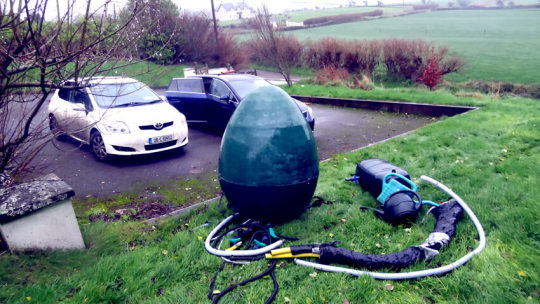
What does one even do with a micro-scale anaerobic biodigester?
Well, this particular anaerobic biodigester takes care of nearly 100% of your food waste.
You feed in all your scraps and waste – even hard-to-compost foods like cooked meats, dairy, cakes and liquids go in. Then the anaerobic bacteria get to work breaking down the waste.
After that, out come two very different ready-to-use products: a biogas for cooking and a nutrient-rich liquid fertiliser for gardening.
Food waste goes in. Gas and fertiliser come out.
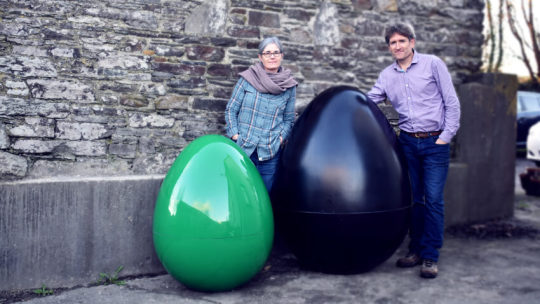
‘We were never really into gardening or growing food. That was the biggest thing to change with the digester,’ Kieran says.
‘During lockdown, we set up the polytunnel and started using the fertiliser from the egg to grow tomatoes and courgettes. Because not only have you got a way to get rid of your food waste, you’ve also got a way to grow more food. And the taste was extraordinary. We had loads of tomatoes so we gave them to friends. They couldn’t get over how tasty they were compared to what they were buying from shops.’
Fiona and Kieran have only seen positives come out of using the egg. They love cooking with the biogas they produce themselves, and having no bill for fertiliser.
#solarpunk#solar punk#reculture#solarpunk aesthetic#solarpunk AF#mygug#ireland#solarpunk innovation#biodigester#food waste into cooking gas and fertilizer#circular food
49 notes
·
View notes
Text

Turning Stink into Sustainability: The Power of Organic Waste Recycling
🌿 The Smell of Change: Embracing Organic Waste 🌿
Let's face it - organic waste can be a bit... fragrant. But behind that pungent aroma lies a hidden potential: a powerful tool in our fight against climate change and food insecurity.
🌍 Reducing Greenhouse Gases: More Than Just Air Freshening 🌍
When organic waste ends up in landfills, it doesn't just sit there. It decomposes anaerobically (without oxygen), releasing methane, a greenhouse gas more potent than carbon dioxide. By diverting our organic waste - think food scraps, yard trimmings, and more - to recycling initiatives like composting or anaerobic digestion facilities, we can significantly cut down these emissions. This isn't just about making the air smell sweeter; it's about making our planet healthier.
💼 Economic Growth: Jobs That Don't Stink 💼
Recycling organic waste isn't just good for the planet - it's great for the economy too. Composting and anaerobic digestion facilities are not just environmental projects; they're job creators. They stimulate local economies and provide employment opportunities, turning waste management into a win-win situation.
🌱 From Landfills to Local Farms: A Sustainable Cycle 🌱
By recycling organic waste, we also reduce our reliance on fossil fuels and shrink our carbon footprint. Compost returned to the earth enriches soil, reducing the need for chemical fertilizers, and promoting sustainable agriculture. It's a cycle of life that benefits everyone: from the earthworms in the soil to the farmers tilling the land, all the way to our dinner tables.
🍲 Combating Hunger: Less Waste, More Food 🍲
Finally, let's talk about food security. Globally, a staggering amount of food is wasted. By reducing food waste, we're not just saving scraps; we're fighting hunger. Every morsel saved from the trash is a step towards ensuring that everyone has enough to eat. In a world where so many go hungry, can we really afford to throw away perfectly good food?
In conclusion, while organic waste might not smell like roses, its potential benefits are undeniably sweet. From combating climate change to feeding the hungry, the sustainable disposal of organic waste is a crucial step towards a greener, more prosperous future. So the next time you wrinkle your nose at the smell of organic waste, remember: that's the scent of change.
What are your thoughts on organic waste recycling? Share your experiences or ideas in the comments below! 💬✨
# # #ClimateChange #FoodSecurity #EcoFriendly
Remember to like and reblog if you believe in a greener future! 🌱💚
57 notes
·
View notes
Text
ADVANCE JIVAMRUT & ORGANIC PESTICIDE MAKING IN COMPOST BAG
In this blog, you’ll discover detailed guides on crafting jaivik fertilizers and pesticides, covering ingredients, preparation methods, application techniques, as well as their benefits, limitations, and safety precautions.
RAW MATERIAL INPUT QUANTITY FOR JAIVIK FERTILIZER:
* Do not use MAIDA items as fertilizer ingredients
Advance jivamrut bag – 5 cubic meter
Liquid composting bag for small farmers – 2.5 cubic meter
PREPARATION:
Setup anaerobic bag, drum(200 ltr) ideally with the use of a plumbing kit.
Now collect all the ingredients mentioned in the above table for the first time input quantity. Start adding it in a drum and stir it in a clockwise direction. (stirring is a must and following water and raw material quantity is must.)
Wait food 45-50 days for compost and thereafter start collecting the liquid fertilizer.

NUTRIENTS IN 1 LITER OF JAIVIK LIQUID FERTILIZER (ADVANCE JIVAMRUT)- WITH TEST METHOD
Below is the lab report for a 1-liter composting bag-based fertilizer.

USAGE & APPLICATION:
Dilute 5 – 10% of jaivik fertilizer in water for spraying as a natural liquid fertilizer.
Apply 250 liters per acre directly to the soil through drip or water channel irrigation.
Adjust application frequency to every 15 – 20 days based on crop size and type.
Suitable for all types of crop. (Jaivik fertilizer for plants, vegetables, indoor plants, agriculture crop)

PRECAUTION:
When preparing natural liquid fertilizer, it’s essential to use ingredients such as desi cow dung, buttermilk, and urine.
Remember to release biogas promptly using the designated outlet in the composting bag
Why desi cow?
Because Indian breed cows contain richer nutrient values compared to hybrid cows. Indian breeds typically have higher levels of nutrients in their dung, buttermilk, and urine. Therefore, utilizing these specific ingredients ensures that the fertilizer produced is of higher quality and provides better nourishment for plants
ADVANTAGES
Requires minimal filtration (99% liquid content).
No adverse effects even with frequent use on soil.
Can be stored for up to 1 year in a plastic bag buried in a pit.
Very less odor (depends on environment)
Affordable and available in customizable sizes, making it accessible for small farmers.
Raw materials easily available on your farm.
Enhances soil pH levels.
RAW MATERIAL INPUT QUANTITY FOR NATURAL PESTICIDE MAKING (जैविक कीटनाशक)

*To make pesticide, wait for 90 days. Then start collecting it.
Note: After 90 days, to add regular quantities, divide the current total quantity of ingredients by 20.
JAIVIK KITNASHAK KYA HAI (बायो-पेस्टीसाइड)
Bio-pesticides are made from natural ingredients, kitchen or vegetable wastes and weed plants. They help to protect crops, vegetables, and fruits from pests, fungi, and diseases. This helps to increase production without harming our health or the environment.

PREPARATION: JAIVIK KITNASHAK BANANE KI VIDHI
The process for making natural pesticide in a bag remains the same as making natural fertilizer. with some variations in raw material content.
It’s important to note that the waiting time for collecting pesticides is 90 days.
USAGE & APPLICATION
You can use pesticide in the interval of 15 to 20 days depending on the crop behavior and amount of crop. If you have 15 liters of pesticide pump, you can add 1-5 liters of pesticide depending on crop circumference(girth).
At the starting level you need a regular amount of pesticide(2 or 3 pumps/acre). At the flowering stage, depending on plant growth and age, you may need more pesticide (more pumps).
PRECAUTIONS
Before pesticide application, assess crop health. If fungi, bacteria, or viruses are present, consider increasing pesticide application in affected areas.
The amount of pesticide applied within a specific time frame depends on the behavior of the crop.
ADVANTAGE: जैविक कीटनाशक के लाभ
Natural ingredients: Derived from plants and organic matter and any biodegradable waste which has nutrition value
Eco-friendly: Minimizes harm to the environment
Non-toxic: Safe for humans, animals, and beneficial insects
Versatile: Effective against pests, fungi, and diseases. Enhances crop productivity without adverse effects
CONCLUSION
In conclusion, crafting cattle manure fertilizer using simple ingredients like cow dung, buttermilk, and urine is a sustainable way to improve plant growth. These homemade solutions are safe for plants and people, offering an eco-friendly alternative to conventional fertilizers and pesticides. They are affordable and easy to make, making them accessible to farmers of all sizes. By adopting these natural methods, we can support healthy crop growth while caring for the environment.
Originally published here -> https://anaerobiccompostingbag.com/advance-jivamrut-jaivik-kitnashak-preparation/
0 notes
Text
When orange bins marked for “compost” drop-off first started proliferating on the streets of New York in February as part of a department of sanitation pilot, many residents celebrated. I was one of them: even as an environmental reporter who has visited the landfill where my trash ends up and is well aware of the problems with food waste, the lack of convenient composting options near me was often prohibitive. Having a bin within walking distance I could access at any time meant all my food waste would finally be converted back into soil.
Or at least that’s what I thought it meant, until the news broke in April that the contents of those “compost” bins mostly don’t go to compost sites, but to an anaerobic digester at a wastewater treatment plant called Newtown Creek. There, the food waste is mixed into sewage before being converted partially into methane.
I wasn’t sure what to make of this, and neither were my neighbors, given that methane is a potent greenhouse gas playing a role in the climate crisis.
Questions about anaerobic digestion – touted as a green solution to food waste – are becoming relevant in more and more places as this method is increasingly a part of organic waste management plans across the US, with plants operating or being built everywhere from Ohio to California and embraced by brands such as Ben & Jerry’s. It’s also fairly common in parts of Europe. But how do its environmental credentials stack up against composting?
54 notes
·
View notes
Text
yo i’m trying to research this but just in case someone on here happens to know:
i’ve been told that “compostable plastics” have to be composted at an industrial facility but i can’t find a specific reason why. like many people, i don’t have a facility near me so i thought it would be fun to experiment and see if i can work them into my home composting setup.
So, is there a special process industrial composters use to break this stuff down or is it just a matter of maintaining proper composting conditions for long enough?
(beyond the scope of the question but if breaking it down through normal aerobic composting and anaerobic composting don’t work i was going to see if i could grow oyster mushrooms on it as a last ditch)
53 notes
·
View notes
Text
I finally braved myself and opened the compost bucket, and it was pretty much what I feared :(
I think it had gone anaerobic, because the airholes had gunk on them, and there was SO. MUCH. FLUID. so the smell was quite bad. Sadly, but unsurprisingly, it looks like the worms had perished, I didn't see any signs of them. I had brought them from the cottage, so I can get more, but not until spring when the compost there thaws. Until then I think I might just put my compost outside and let it freeze...
10 notes
·
View notes
Text
3/8/24
I set out some water coolers and jugs to collect rainwater. It filled all the ollas with plenty to spare.
I planted potatoes in the small patio raised bed using old soil mix from the shed. It’s been hiding there since we got the house, so I left it in the rain to rehydrate and added some extra sand and compost. It’s probably very poor quality, and maybe too saturated because it rained again, so I’ll see if the potatoes actually sprout. I put the bed on the east side of the house, close to the other raised beds, it should get enough sun.
The green compost bin has holes on the sides but not the bottom, so the bottom went anaerobic. It was too muddy to sift, and I had more greens to add, and it’s filled with grubs, so I took the most labor intensive path of manually picking out any bugs and unfinished stuff from the pile. I fished out the soggy stuff and put it on bed 1, then refilled the bin with paper and greens. I will need a more permanent solution for my compost soon.
Regarding the grubs - there were like at least 50 in that tub. But I’m conflicted on what to do with them because they seem to make quick work of whatever I add to the compost, and I don’t know if they are June bug grubs that could lay eggs in and damage the vegetable beds. I could feed them to my mom’s chickens.
Flower updates: The snapdragons are finally blooming, and they’re huge. Not sure why they didn’t flower until now; either the growing conditions weren’t right, or I need to buy a 6-pack that’s closer to blooming. The rest of bed 4 is pretty overgrown, so I’ll leave the bolted greens to the bees.
The tulips in bed 2 are popping up, pretty good germination rate considering the state of the bulbs.
The wildflower patch is growing in. I noticed that other yards have blooming California poppies already; not sure if mine are late or something. The closest one to blooming is the tidy tips plant.



2 notes
·
View notes